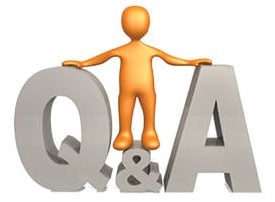Click here to get this article in PDF

We get lots of questions from the public about precious metals.
Some people are curious about the basics. Others are skeptical about the case for owning gold and silver. Still others are longtime customers who have highly specialized inquiries.
Here we will answer a few of the most common, most broadly relevant questions we get…
QUESTION: Since the Fed seems likely to hike interest rates in 2022, should we wait before adding to our gold and silver holdings?
ANSWER: Not necessarily. Trying to wait out the Fed could prove to be a huge mistake.
Consider that the gold market reached its last major bottom in December 2015 at around $1,050 an ounce. That coincided with the onset of a rate-raising campaign.
Previously, a third round of Quantitative Easing was announced in September 2012.
Many analysts assumed that QE3 would provide an immediate boost to gold and silver prices. Instead, the metals markets declined for several months following the Fed’s announcement.
The lesson is that precious metals markets don’t move in lockstep with Fed easing or tightening. Gold and silver prices show virtually no correlation to nominal interest rates.
What matters is real interest rates – meaning, interest rates relative to inflation rates. Real rates are near their most deeply negative levels ever, thanks to the recent inflation spike. And real rates can remain negative throughout a Fed tapering and hiking campaign.
QUESTION: What’s your overall philosophy when choosing what specific precious metals products to buy?
ANSWER: We encourage folks to focus on the lower premium items so virtually all their investment goes into acquiring the metal itself.
Most importantly, that means avoiding so-called “rare,” graded, or proof coins which generally carry high premiums, unrecoverable upon a later sale.
You will almost certainly be better off if you stick with bullion coins, bars, and rounds where the cost is mostly determined by the spot price. Within that group, bars and rounds almost always offer the best value.
QUESTION: Will there be a silver shortage?
ANSWER: Shortages are a symptom of central planning gone awry.
In a properly functioning market economy, price signals cause supply to respond quickly to fluctuations in demand. Those crucial price signals have been distorted by massive interventions into the economy by the government and Federal Reserve.
The Fed is artificially suppressing interest rates. That has the effect of artificially stimulating asset market speculation as well as consumer demand – and exacerbating inflation.
If investor psychology shifts toward inflation protection and hunkering down financially, the physical bullion market could see demand overwhelm supply.
Shortages of retail gold and silver products would mean premium spikes and possibly a surge in spot prices as well.
Over the past couple years, the dysfunctional U.S. Mint – a government bureaucracy – has consistently failed to produce adequate quantities of its gold and silver American Eagle coins. Demand continues to strain available inventories, making privately minted bars and rounds a better value than ever.
The good news is that those who hold hard-to-get precious metals will be in the driver’s seat. They can choose to sell whenever they believe prices, including potential buyback premiums over spot, are high enough.
If government-induced inflation and supply disruptions continue to get worse, chances are today’s bullion prices will look low compared to where they’re headed.
